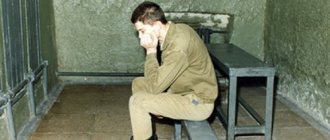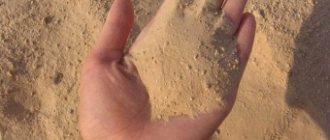What is illegal logging and what is not?
Not everything that is cut down is considered illegal. For example, on your personal plot you can safely remove trees that you don’t need, even without special permission, but with the caveat that the plot should not be adjacent to natural areas that are under state protection.
Trees that cannot be cut down without accompanying documentation include:
- those located along roads and railways;
- that grow in alleys and parks;
- are part of the state forest fund;
- grow on the territory of forest nurseries or agricultural lands.
Moreover, it makes no difference whether these trees were planted by a person or whether they grew on their own.
Tree felling means that the trees have been damaged to the point of complete cessation of their life and growth, but it is considered illegal only when the organizer of the procedure cannot prove the contrary with documentation.
This definition also includes illegally issued and issued permits for logging and those logging that was carried out in violation of deadlines or technologies.
The basis of legal acts that are directly related to this topic are the Forestry and Criminal Codes of the Russian Federation.
Forest groups
All forests on the territory of Russia can be classified into 3 groups according to their environmental and economic importance:
- This group includes plantings that have a water protection and protective function. For example, these could be forest belts along the banks of reservoirs or wooded areas on mountain slopes. This group also includes forests that perform sanitary, hygienic and health-improving functions, national reserves and parks, and natural monuments. The forests of the first group account for 17% of the total forest area.
- The second group includes plantings in areas with high population density and a well-developed transport network. This also includes forests with an insufficient timber resource base. The second group accounts for about 7%.
- The largest group accounts for 75% of its share in the forest fund. This category includes plantings for operational purposes. Due to them, the needs for wood are met.
The division of forests into groups is described in more detail in the “Fundamentals of Forest Legislation”.
Who is involved in the arrest and investigation?
In addition to law enforcement agencies, state forestry inspectors, as well as RosPrirodNadzor, forest rangers, rangers, and forest patrol members are also required to carry out regular raids on their territories.
Complaints and signals from citizens that illegal logging is probably taking place are received by a special Environmental Prosecutor's Office. When a violation is detected at the crime scene, until the circumstances are clarified, all those involved - both customers and performers - are held accountable.
The raid participants draw up a protocol, establish the amount of damage, and if it does not exceed 5 thousand rubles, then the Code of Administrative Offenses of the Russian Federation comes into play.
Victim
As an analysis of criminal cases shows, victims in the investigation of cases of illegal logging are recognized as:
- Employees of departmental forestry services serving the territory in which the tort took place.
- Other owners of land plots where objects of perennial flora have been cut down (representatives of the administration of the relevant municipality, etc.).
The decision on recognition as a victim falls within the competence of investigators and interrogators, who, upon receiving information about the infliction of damage and after presenting the necessary power of attorney, are required to make an appropriate decision.
Punishment and responsibility
For illegal logging, you will be held accountable, which is provided for by administrative and criminal legislation.
Administrative
The cutting down of trees, bushes and other plantings is prosecuted in accordance with the provisions of Article 8.28 of the Code of Administrative Offenses of the Russian Federation, if the act does not contain signs of a criminal offense.
Punishment for violating this article involves the payment of fines. Fines for simple cutting are the following amounts (in thousands of rubles):
- 3-4 - for ordinary citizens;
- 20-40 - for officials;
- 200-300 - for legal entities.
If, during the felling, various mechanisms and equipment were used, or the felling took place in forest-park green belts, then the penalty will be (in thousand rubles):
- 4-5 - for ordinary citizens;
- 40-50 - for officials;
- 300-500 - for organizations.
The presence of such aggravating circumstances as the use of special equipment also implies the confiscation of all logging, and by a court decision both tools and vehicles can be confiscated.
Punishment may also apply to those persons who transport billets, knowing that they were obtained illegally. Thus, even if a person did not directly participate in the logging process itself, the fines will be as follows (in thousands of rubles):
- 5 – for citizens;
- 50 – for officials;
- 400-700 – for legal entities.
Criminal
Any demolition of trees, if permission has not been obtained, is automatically equated to one of the types of environmental crime.
If we talk about criminal matters, then the consideration takes place in accordance with Article 260 of the Criminal Code of the Russian Federation. Moreover, in order to fall under this article, it is not necessary to destroy a forest or part of it—damaged forest cover without the possibility of its subsequent restoration is sufficient. And even if dead wood was cut down, there would be no mitigation of the punishment.
Every person who owns land should know about the existence of such a law. This article provides for several types of punishments, including:
- fine;
- compulsory work;
- correctional work;
- deprivation of the right to engage in a certain type of activity (up to 3 years);
- imprisonment (for up to 4 years with a fine of 300-500 thousand rubles).
The classification of the scale of the offense is divided into 3 groups - significant, large and especially large. Each class has its own fine:
- with significant – from 5 thousand to 49,999 rubles;
- for a large size – 50,000-149,999 rubles;
- for a particularly large size – from 150,000.
Judicial practice: sentences and punishment under Art. 260 of the Criminal Code of the Russian Federation
- Resolution of the Plenum of the Supreme Court of the Russian Federation dated... PLENARY OF THE SUPREME COURT OF THE RUSSIAN FEDERATION DECISION dated December 27, 2002 N 29 ON JUDICIAL PRACTICE IN CASES OF THEFT,...
- Resolution of the Presidium of the Supreme Court of the Russian Federation dated... PRESIDIUM OF THE SUPREME COURT OF THE RUSSIAN FEDERATION DECISION dated December 5, 2018 N 126-P18 ON RESUMING PROCEEDINGS IN THE CASE DUE TO NEW...
- Decision of the Supreme Court: Determination N 203-APU17-21... THE SUPREME COURT OF THE RUSSIAN FEDERATION Case No. 203-APU17-21 APPEAL DECISION Moscow August 31, 2022 Judicial Collegium for Military Personnel of the Supreme...
- Resolution of the Plenum of the Supreme Court of the Russian Federation dated... PLENARY OF THE SUPREME COURT OF THE RUSSIAN FEDERATION DECISION of November 15, 2016 N 48 ON THE PRACTICE OF APPLICATION BY COURTS OF LEGISLATION GOVERNING FEATURES...
- Resolution of the Plenum of the Supreme Court of the Russian Federation dated... PLENAUM OF THE SUPREME COURT OF THE RUSSIAN FEDERATION DECISION dated June 25, 2022 N 18 ON JUDICIAL PRACTICE IN CASES OF CRIMES,...
- Judicial Collegium for Criminal Cases, appeal:... THE SUPREME COURT OF THE RUSSIAN FEDERATION Case No. 72-APU 17-21 APPEAL DECISION Moscow October 04, 2022 Judicial Collegium for Criminal Cases...
- Decision of the Supreme Court: Resolution No. 310P13 dated... DECISION OF THE PRESIDIUM OF THE SUPREME COURT OF THE RUSSIAN FEDERATION Case No. 310-P13 Moscow January 23, 2014 Presidium of the Supreme Court of the Russian Federation...
- Resolution of the Plenum of the Supreme Court of the Russian Federation dated... PLENAUM OF THE SUPREME COURT OF THE RUSSIAN FEDERATION DECISION dated December 17, 2022 N 43 ON SOME ISSUES OF JUDICIAL PRACTICE IN CASES...
- Ruling of the ECtHR dated 02/14/2017 EUROPEAN COURT OF HUMAN RIGHTS THIRD SECTION CASE “MASLOVA VS. RUSSIAN FEDERATION” (Complaint No. 15980/12) JUDGMENT…
- Decision of the Supreme Court: Determination No. 38-АПУ17-2 dated... THE SUPREME COURT OF THE RUSSIAN FEDERATION No. 38-АПУ17-2 APPEAL DECISION Moscow March 1, 2022 Judicial Collegium for Criminal Cases of the Supreme Court...
When can liability be avoided?
Laws regarding deforestation are very weak and have many weaknesses.
For example, a single designation for the term “felling” has not yet appeared. In addition, in a number of regions the interpretation of the law itself differs - some believe that only direct logging is criminally prohibited, and specific participants can be considered guilty, and those who are engaged in related activities are just accomplices. In a number of other regions, on the contrary, all identified persons are considered violators, regardless of what role they played in the process.
It is precisely because of such disagreements in the law that lawyers have a lot of room for maneuver. This practice clearly demonstrates that it is extremely difficult to actually record and then prove a violation, and sometimes it is not at all possible.
For example, timber is not always removed on the same day on which the felling was carried out. In such cases, detainees may claim that they did not cut anything out, but were simply removing abandoned trees.
Both small loggers and gray industrialists take advantage of such imperfections in the system, which is why the scale of illegal logging continues to increase every year.
Obtaining permission to cut down
If you intend to cut down or replant trees, you must obtain a so-called “cutting ticket,” which is a permit to carry out the procedure. You can contact him in the following cases:
- during the reconstruction of capital construction projects;
- when carrying out major and current repairs of utilities;
- during demolition of buildings and structures;
- when restoring the standard light regime in residential and non-residential premises;
- when conducting engineering-geological surveys.
Individuals, legal entities, individual entrepreneurs, as well as those authorized to carry out construction can receive a ticket. To obtain a logging permit, the following documents are required:
- statement;
- passport or any other document that identifies the applicant;
- dendroplane;
- a document that identifies the applicant's representative;
- a document that confirms the authority of the representative;
- statement of account.
The legislative framework
Depending on the situation and circumstances of the offense, the guilty party may be held liable in various ways, according to the articles:
- Art. 8.28 of the Code of Administrative Offenses of the Russian Federation - illegal logging, unauthorized digging up of trees, bushes, vines in forests or damage to forest plantations;
- Art. 260 of the Criminal Code of the Russian Federation – illegal logging of forest plantations;
- Art. 8.29 Code of Administrative Offenses of the Russian Federation – destruction of animal habitats;
- Art. 16 LC RF – felling of forest plantations;
- Art. 13 LC RF – forest infrastructure;
- Art. 14 LC RF – timber processing infrastructure;
- Art. 21 LC RF – construction, reconstruction and operation of facilities that are not related to the creation of forest infrastructure;
- Art. 29 LK RF – timber harvesting.
We examined one of the types of poaching that is currently flourishing. In pursuit of money, people do not understand what serious harm is caused to nature, the environment and us, and illegal deforestation is a common phenomenon today.







